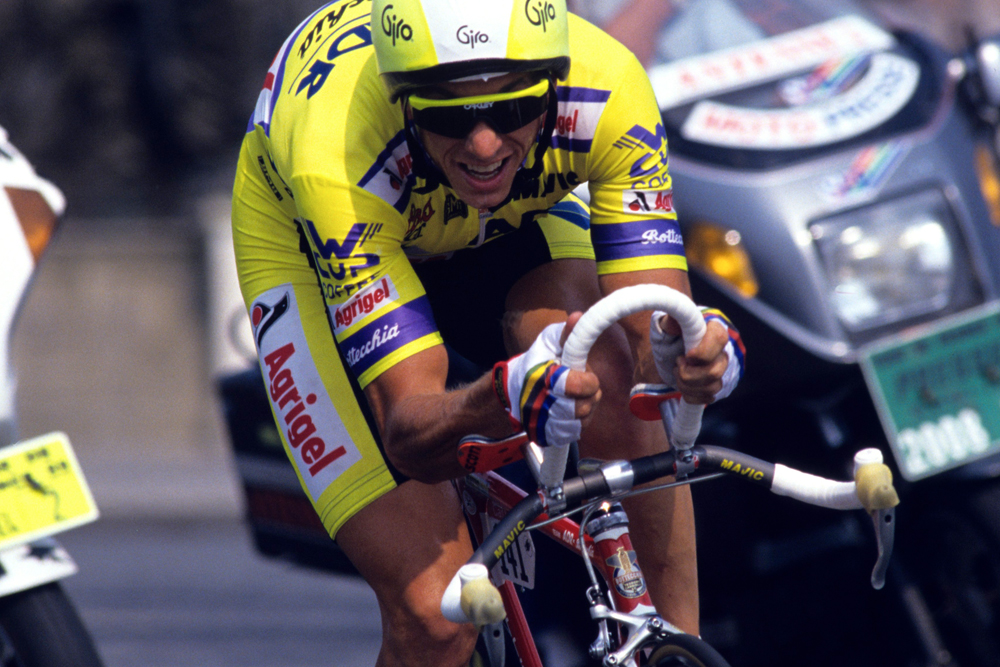How Greg LeMond’s aero bars revolutionised time trialling
How a time trial bar opened the door to wind-cheating tech

Photo: Graham Watson

The 1989 Tour de France is inextricably linked with the first use of tri-bars in the peloton. Would Greg LeMond, who started the final time trial 50 seconds behind Laurent Fignon on GC, have triumphed by that famous eight-second margin without them?
>>> Greg LeMond’s five greatest wins
LeMond’s radical ‘aero bar’, designed by Boone Lennon, a former US national ski team coach who understood aerodynamics perhaps better than anybody in cycling at that time, was unveiled before the stage five time trial — 73km from Dinard to Rennes.
>>> Icons of cycling: the first Shimano STI gear shift system
The American’s directeur sportif, Jose De Cauwer, presented the bike fitted with the aero bar to the commissaires the day before: “I went early, so no one from any other team would see we were intending to use them,” De Cauwer told Cycling Weekly in 2009. “I said, ‘LeMond wants to use these bars.’

“The chief judge said, ‘OK, you can use it, no problem.’ I carried on. ‘He has a problem with his back; this is more comfortable for him.’ The judge replied, ‘I said it’s OK, he can use them.’ Then I got out of there.”
>>> Icons of cycling: Look’s revolutionary clipless pedals
The latest race content, interviews, features, reviews and expert buying guides, direct to your inbox!
LeMond won by 24 seconds and took over the yellow jersey. It seemed like an impressive return to form following the hunting accident two years earlier that had nearly killed him.
Raising the bar
LeMond knew the difference the new bar had made. He had tested it with a team-mate, Jaanus Kuum, who was on a standard time trial bike with a bullhorn bar. He and Kuum had used heart rate to gauge whether there was an advantage to be had.
LeMond worked up to 175bpm on the tri-bars, while Kuum sat on his wheel. Even tucked in behind LeMond, Kuum found it hard to stay on.

Before the final time trial Fignon’s directeur sportif, the wily Cyrille Guimard, had complained to the referee about LeMond’s bars, to no avail. Now LeMond was ripping up and down the Champs-Elysées, arms stretched out in front like a downhill skier, eating into Fignon’s margin.
LeMond had asked not to be given time checks because he wanted to ride flat-out. Fignon, meanwhile, was riding disc wheels front and rear and was battling with his unstable bike. The bespectacled Frenchman sweated and grimaced all the way to the line, his ponytail flapping in the wind like a white flag.
>>> Icons of cycling: The Champs-Elysées
Those unforgettable scenes on the Champs-Elysées in 1989 heralded the beginning of cycling’s aero revolution. Although today’s super-slippery time trial bikes look nothing like LeMond’s red steel Bottecchia with its U-shaped bar, that was where it started.
How much faster is an aero road bike?
Simon Smythe is a hugely experienced cycling tech writer, who has been writing for Cycling Weekly since 2003. Until recently he was our senior tech writer. In his cycling career Simon has mostly focused on time trialling with a national medal, a few open wins and his club's 30-mile record in his palmares. These days he spends most of his time testing road bikes, or on a tandem doing the school run with his younger son.
